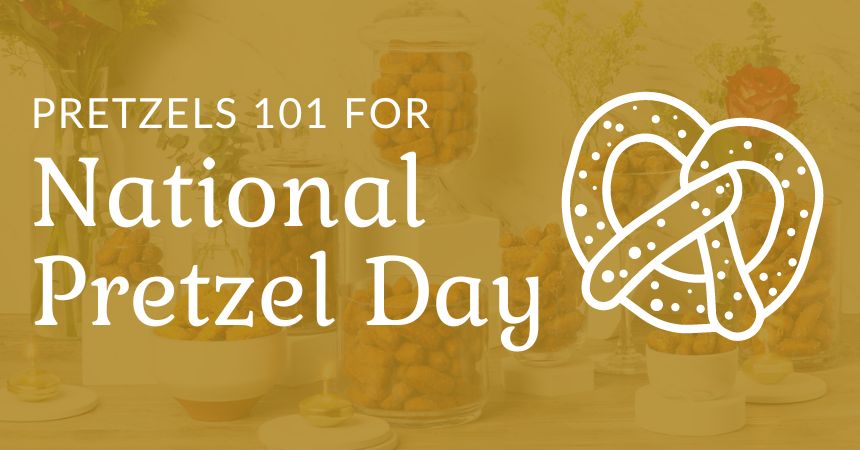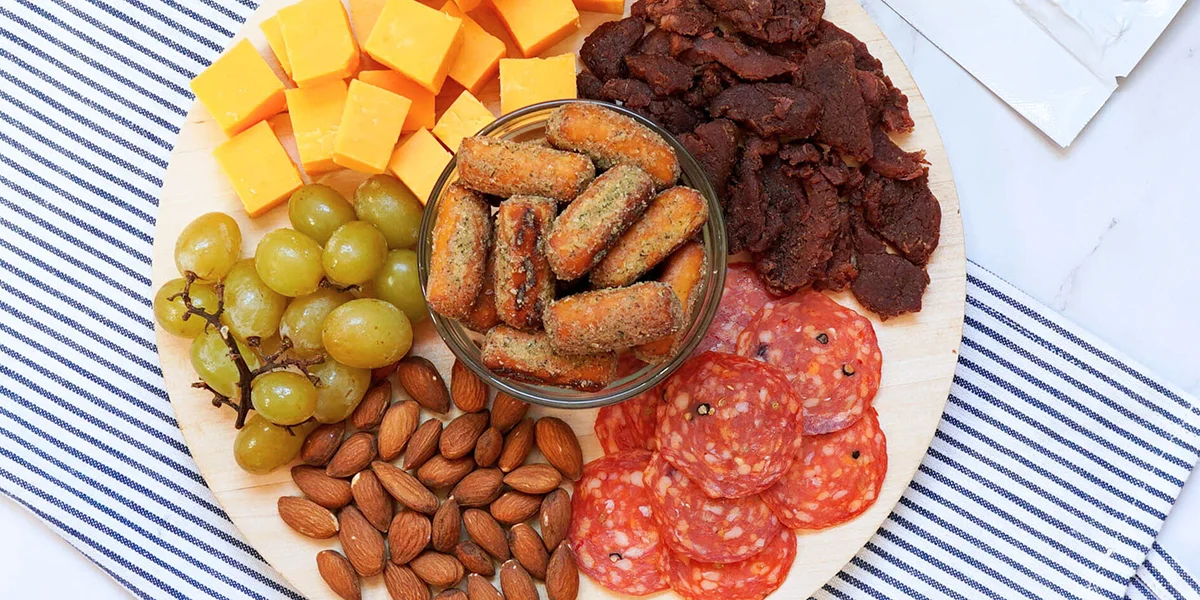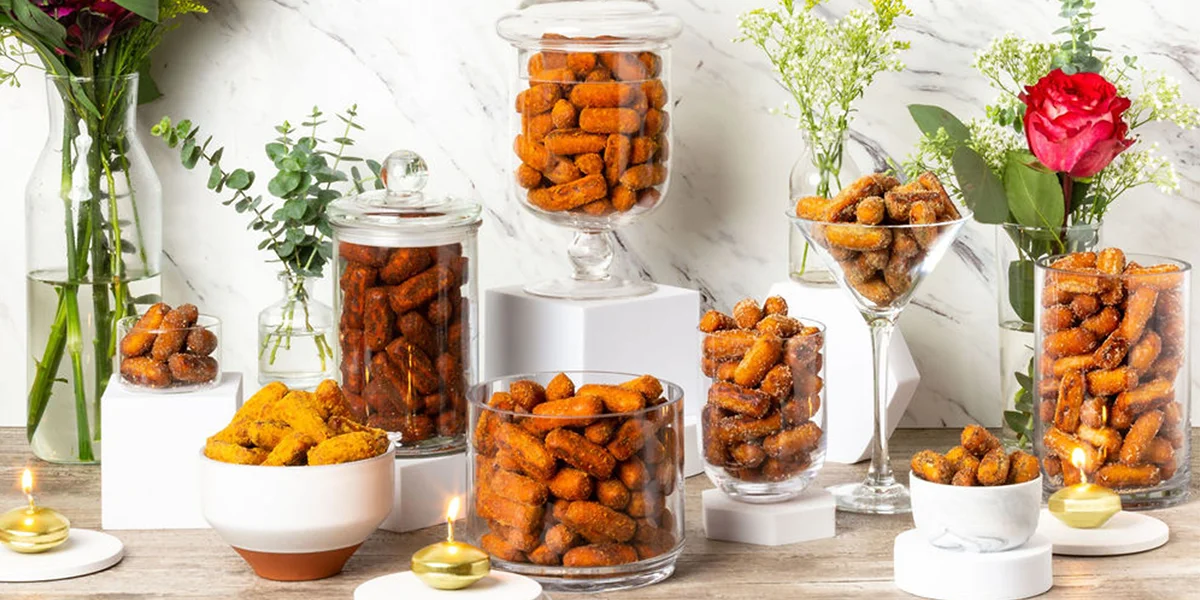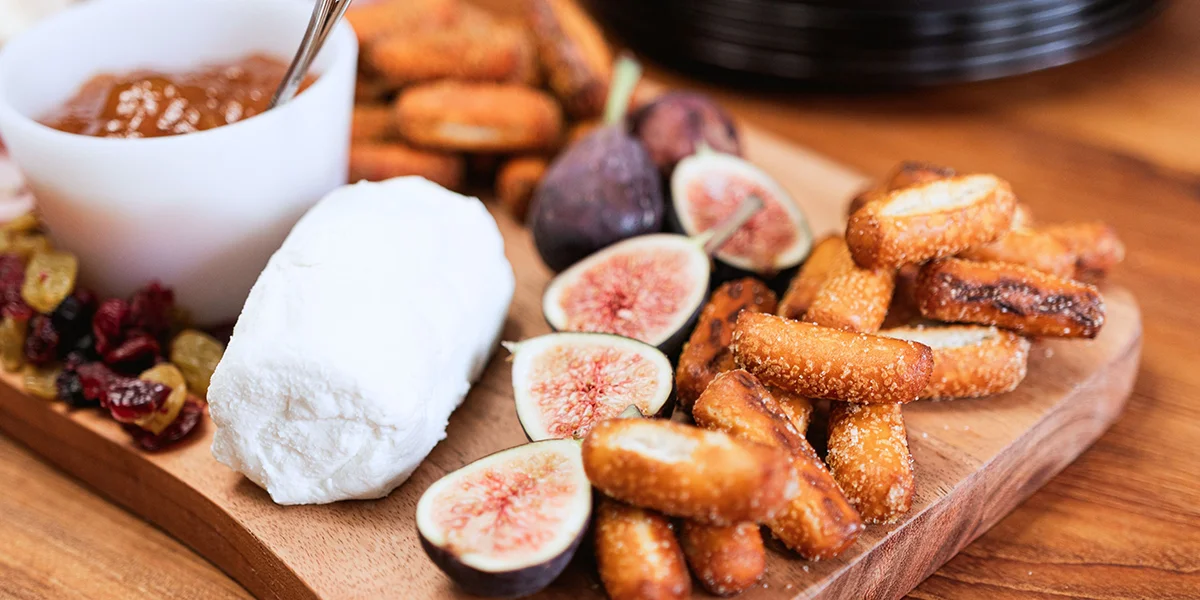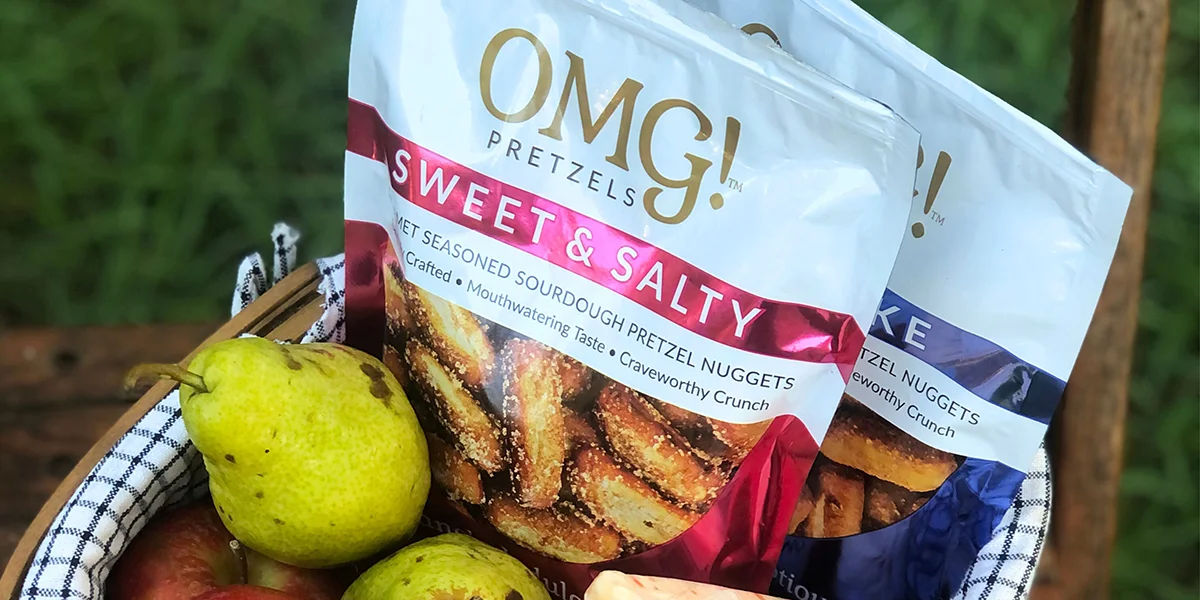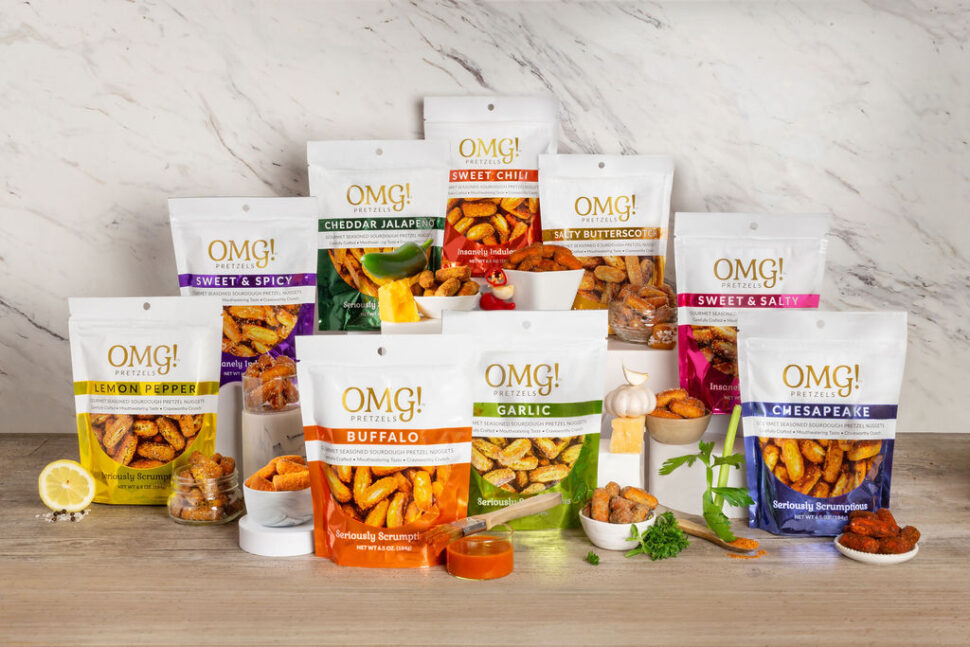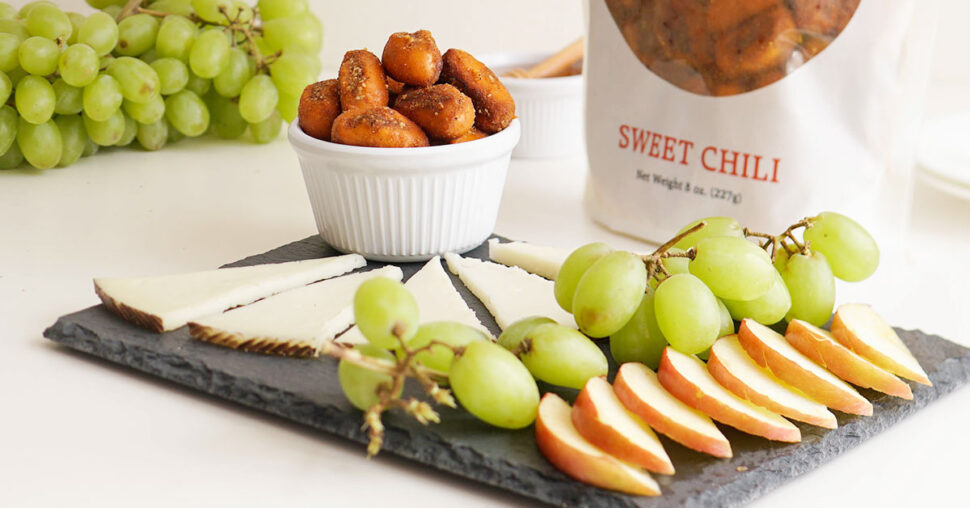We admit it, we’re a little pretzel-obsessed. But honestly, what’s not to love? If you're ready to give our boldly seasoned sourdough pretzel nuggets a try, we suggest the Classic Flavors Variety Pack that will give you the opportunity to taste the five varieties that put us on the snacking map.
National Pretzel Day is April 26th!
We all love a great snack, don't we? What’s truly amazing is that the combination of a few simple ingredients creates one of the oldest and most delicious snacks in history. Of course, we are talking about the History of Pretzels. Sure cookies, pastries, chips, and crackers also make yummy snacks, but there's something about pretzels we just can't resist!
Pretzels are so versatile. They can be crunchy or soft, large or small, sweet or savory, flavored or plain. Plus, pretzels come in many shapes – nuggets, sticks, twists, circles, and the traditional knot.
OMG! Pretzels are primarily made of four all-natural ingredients – wheat flour, salt, yeast and baking soda – and are GMO and preservative free. The two most common varieties of pretzels are soft pretzels that need to be eaten immediately and hard pretzels, like our seasoned sourdough pretzel nuggets, which have a longer shelf life.
Salt is the most common seasoning for pretzels, followed by cheeses, sugar, chocolate, cinnamon, sweet glazing, seeds, and nuts. Our seasoning blends are what make OMG! Pretzels seriously scrumptious and set us apart from the other pretzels out there. We offer nine varieties of sourdough pretzel nuggets with a crave-worthy crunch that satisfy any snack craving. They are also great for elegant entertaining or adding to your favorite recipe, just warm them slightly on a baking sheet at room temperature for enhanced aroma and flavor.
History of Pretzels
While no one knows the exact pretzel origin for sure, the most popular story is that in 610 A.D., while baking bread, an Italian monk decided to create a special treat to motivate his distracted students. He rolled out ropes of dough, twisted them to resemble hands crossed on the chest in prayer, and then baked them. Hence, the pretzel was born.
The first pretzels were a soft, squishy bread, similar to the soft pretzels of today. They were always baked and originally called “bracellae.” This is the Latin word for “little arms” and complements the story of the monk's design. From this root word, the Germans derived the name “bretzel,” and from that, the word “pretzel” was created.
Because of their monastic origin, pretzels gained religious importance. During the Middle Ages, monks gave away pretzels to the poor, and they became a symbol of sustenance, good fortune, and prosperity. Pretzel bakers were even regarded as upholders of tradition and morality in the community.
As the decades went by, pretzels came to symbolize love in addition to its other positive attributes. In 1614, royal couples in Switzerland used to break a pretzel in their wedding ceremonies. Some believe this is where the phrase “tying the knot” became common. In the 1700s, German immigrants brought the popular snack to the U.S. with many pretzel bakeries opening in Pennsylvania during this time. Even today, the pretzel origin of about 80% of pretzels made in America is Pennsylvania – including OMG! Pretzels.
Pennsylvania is also the home to the first hard pretzel manufacturer. In 1861, Julius Sturgis opened the first commercial pretzel bakery in Lititz, Pennsylvania focused on these crunchy snacks. At the time, they were seen as beneficial because they could be transported far away from the bakery given their long shelf life. This helped pretzels spread across the young country, placing hard pretzels in more homes in America.
Fun Facts about Pretzels
Here are some fun facts about pretzels:
- National Pretzel Day is on April 26.
- October is National Pretzel Month.
- The pretzel is long considered a good-luck symbol due to its religious roots.
- Pretzels without salt are called baldies.
- More than $550 million worth of pretzels are sold in the United States annually.
- The average American consumes up to two pounds of pretzels in a year. Philadelphians, however, consume up to 12 pounds of pretzels per person per year.
- A traditional baking method recommends letting the dough rest for 30 minutes at room temperature before shaping and baking.
Where did pretzels originate?
The shape and texture of the snack impact pretzel origin and the history of pretzels is storied.
- In the 12th century, the Baker’s Guild used the pretzel as its symbol; one had to be able to bake the perfect pretzel to earn the title of master.
- Until the 1930s, pretzels were handmade, and a typical worker could twist 40 pretzels in a minute.
- In 1935, the Reading Pretzel Machinery Company introduced the first automated pretzel machine, which helped large bakeries make 245 pretzels a minute, or five tons a day.
- In 2004, Manayunk Park located on the 4300 block of Silverwood Street in Philadelphia, was renamed “Pretzel Park.” The updated facility includes pretzel-like looped pathways and a pretzel-shaped art installation sculpted by Warren C. Holzman.
- The record for the largest pretzel in the Guinness Book of World Records was made in Germany in 2008; it weighed 842 pounds and was 26 feet long.
- In 2014, OMG! Pretzels were born - two pans at a time in our home’s kitchen. Read about the pretzel origin story of our seasoned sourdough pretzel nuggets.
Interesting Facts About Pretzels
The pretzel is connected with many functions and ceremonies around the world:
- On New Year’s Day, German children wear pretzels around their necks to symbolize a new beginning.
- In 16th-century Austria, pretzels were used to decorate Christmas trees.
- In Switzerland, newlyweds traditionally make a wish and break a pretzel, resembling how people in other cultures break a wishbone or a glass.
Now that you are fully educated on the history of pretzels, you can snack with confidence that you are enjoying one of the world's most loved and enduring snacks. We challenge you to boost your pretzel snacking experience by trying one of our nine innovative flavors: Garlic, Sweet & Salty, Chesapeake, Cheddar Jalapeño, Buffalo, Sweet & Spicy, Lemon Pepper, Salty Butterscotch, or Sweet Chili. Our seasoned sourdough pretzel nuggets stand alone as a delicious snack, or you can incorporate them into recipes to amp up the flavor and crunch of your favorite dishes. Happy Pretzel Day, friends. Snack on!
If you liked learning interesting facts about pretzels, sign up for our newsletter for more pretzel-tastic information, seasonal snack ideas and original recipes.

